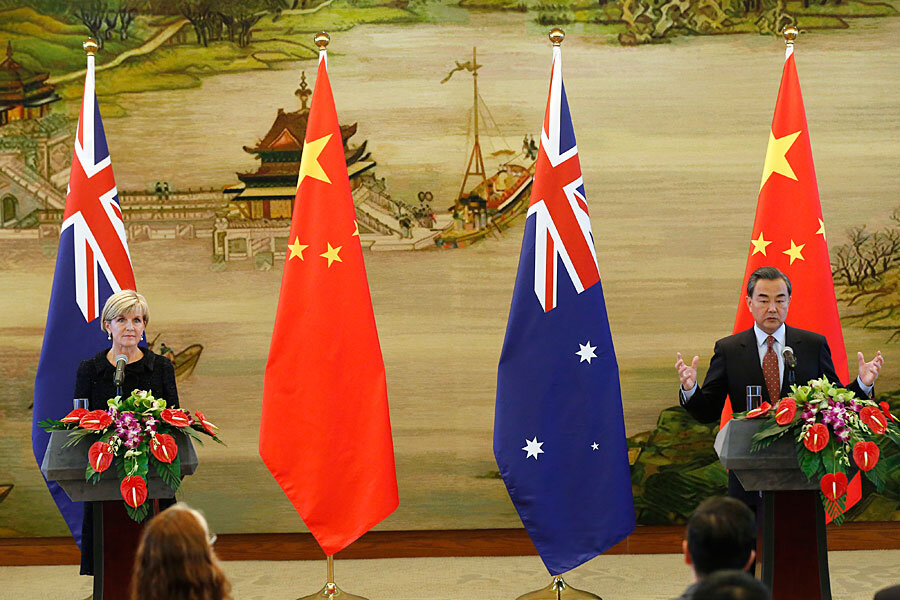Why did China deploy missiles in the South China Sea?
As the members of the Association of Southeast Asian Nations (ASEAN) wrapped up talks yesterday in Sunnylands, California, officials in Taiwan confirmed that China had deployed surface to air missiles on a disputed island in the South China Sea.
The South China Sea has been a hotly contested area for decades due to an abundance of natural resources, including oil.
According to Center for Strategic and International Studies expert Bonnie Glaser, China’s expansion is driven by security concerns. “The Chinese are increasingly concerned about their security, and want to protect their maritime interests.”
The tiny island chains that dot the sea have been claimed by several countries, many of which were in attendance at the ASEAN summit in California this week.
Taiwan and China are not the only countries that have laid claim to at least some of the South China Sea territory: the Philippines, Vietnam, Malaysia, and Brunei are all involved in the dispute.
In 2009, China presented a claim to the area it calls the “near seas” before the United Nations. Ms. Glaser called the claim “ambiguous,” and says that it is based on a historic map of the South China Sea.
According to Taiwan, China deployed the missiles on Woody Island, part of a disputed chain of islands called the Paracels. Although China technically controls the chain, Vietnam and Taiwan have both asserted their claims to the territory.
A statement released by Taiwan’s Ministry of National Defense asked “relevant parties to refrain from any unilateral measure that would increase tensions.”
A United States official confirmed that China had indeed installed H-9 missile batteries on Woody Island.
Since last summer, China has been expanding its control in the South China Sea through a variety of efforts, including building man-made islands in the Spratly island chain. The construction of airfields on various islands in the area also allows China greater control over the airspace.
In October, President Obama called for a halt to China’s island construction after a meeting with Philippines President Benigno S. Aquino III.
“We agree on the need for bold steps to lower tensions,” said Mr. Obama, “including pledging to halt further reclamation, new construction and militarization of disputed areas in the South China Sea.”
The Asian giant’s refusal to cease expansion efforts, despite rival claims on the territory, has aroused fears that China is militarizing the South China Sea.
The US government has repeatedly asserted that China has no right to assert that kind of control. In October, the Pentagon sent the USS Lassen on a patrol near one of the disputed islands in a show of support for the principles of freedom of navigation.
This week’s ASEAN conference addressed the dispute. According to Obama, attendees "discussed the need for tangible steps in the South China Sea to lower tensions, including a halt to further reclamation, new construction and militarization of disputed areas."
The new missile installation on Woody Island obviously escalates tensions. Yet, Glaser told The Christian Science Monitor in an interview that China views its expansion efforts in the South China Sea as defensive.
Reuters reports that a statement by a Chinese government official on Wednesday confirmed China’s defensive perspective.
"As for the limited and necessary self-defense facilities that China has built on islands and reefs we have people stationed on,” said Chinese Foreign Minister Wang Yi, “this is consistent with the right to self-protection that China is entitled to under international law so there should be no question about it."
Council on Foreign Relations fellow Jennifer Harris had a slightly different view. Ms. Harris told the Monitor in a phone interview that, “My take on this is that it is a testing ground for China to test its rising strength against the US.”
Although the missile installment on Woody Island is ostensibly an Asian issue, the United States a vested interest in maintaining stability in the region. According to Glaser, much of the $5.3 trillion in trade that passes through the South China Sea goes to the United States.
The United States also is interested in maintaining civility in the region. “We don’t want to see China using coercion and intimidation against its neighbors,” says Glaser.
Harris told the Monitor that perhaps the best tool the United States possesses is its relationship with ASEAN, the group of ten southeast Asian countries that met this week in California. Although ASEAN is currently militarily focused, it could do more to counter China’s economic coercion.
“Hopefully the next act is not just traditional territorial boundary enforcement,” said Harris, “but the creation of new norms and a push back against economic coercion.”





